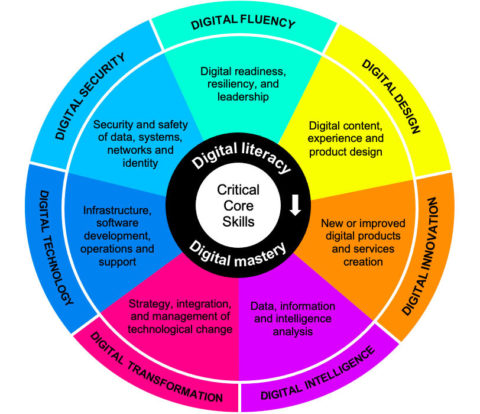This NCVER paper prepared by researcher Jane Schuler for the Digital Skills Organisation (DSO) examined the pathways identified from overseas that can assist in developing a model suitable for Australia.
The commonalities and differences among the pathways are presented, along with the different Australian government digital skills initiatives.
A pathways approach
Improving Australia’s position as a technological innovator seems to be on the agenda right now and this role is underpinned by an increased focus on digital skills. Key to this is improving and expanding pathways into digital jobs. While this is sometimes seen as associated with specialist jobs, in fact identifying the digital skills competence associated with different occupations or skillsets and levels of proficiency has become increasingly important to provide a clear definition of pathways that will enable national skills priorities to be identified, recognised and then to use these to develop and progress specific ‘pathway actions’.
Based on NCVER’s research and other findings, the project has developed an Australian pathway drawing on six overseas models. Analysis of them shows that their commonalities are that: “all mention data and information literacy, safety and security, communication and problem-solving skills and proficiency levels typically based on task complexity and level of autonomy.”
As regular VDC News readers will recall these ‘soft’ communication and problem-solving skills get a regular airing in Australia when digital skills are discussed. However,
“The analysis of digital skills initiatives occurring across Australia found limited integration of activities or an overarching skills framework in Australia. The initiatives seem to be largely developed independently across the various governments in Australia.”
The pathways model the research paper arrived at is outlined diagrammatically in the figure below:

The DSO Pathways model consists of four elements – Core Purpose, Digital Domains, Proficiency Levels and Critical Core Skills. The seven domains are each described in the figure’s ‘pie slices.’
The model is based on five guiding principles: “ (1) That it be stable over time; (2) flexible, practical, and easily understood and implemented; (3) independent of digital tools, occupation titles or the environment; (4) dynamic with the ability to capture emerging technologies and innovation skill clusters and (5) well defined and easy to adopt. It is now being trialled by the DSO in partnership with industry and employer groups.
And finally, here’s a round-up of other NCVER research on digital skills:
Skilling the Australian workforce for the digital economy
Incorporating digital skills into VET delivery: good practice guide
Teaching digital skills: implications for VET educators – good practice guide
Articles on digital skills and literacy related to current and future work published in VDC News can be found here and here. Another article, entitled ‘Digitising VET learning’ may also be of interest.
